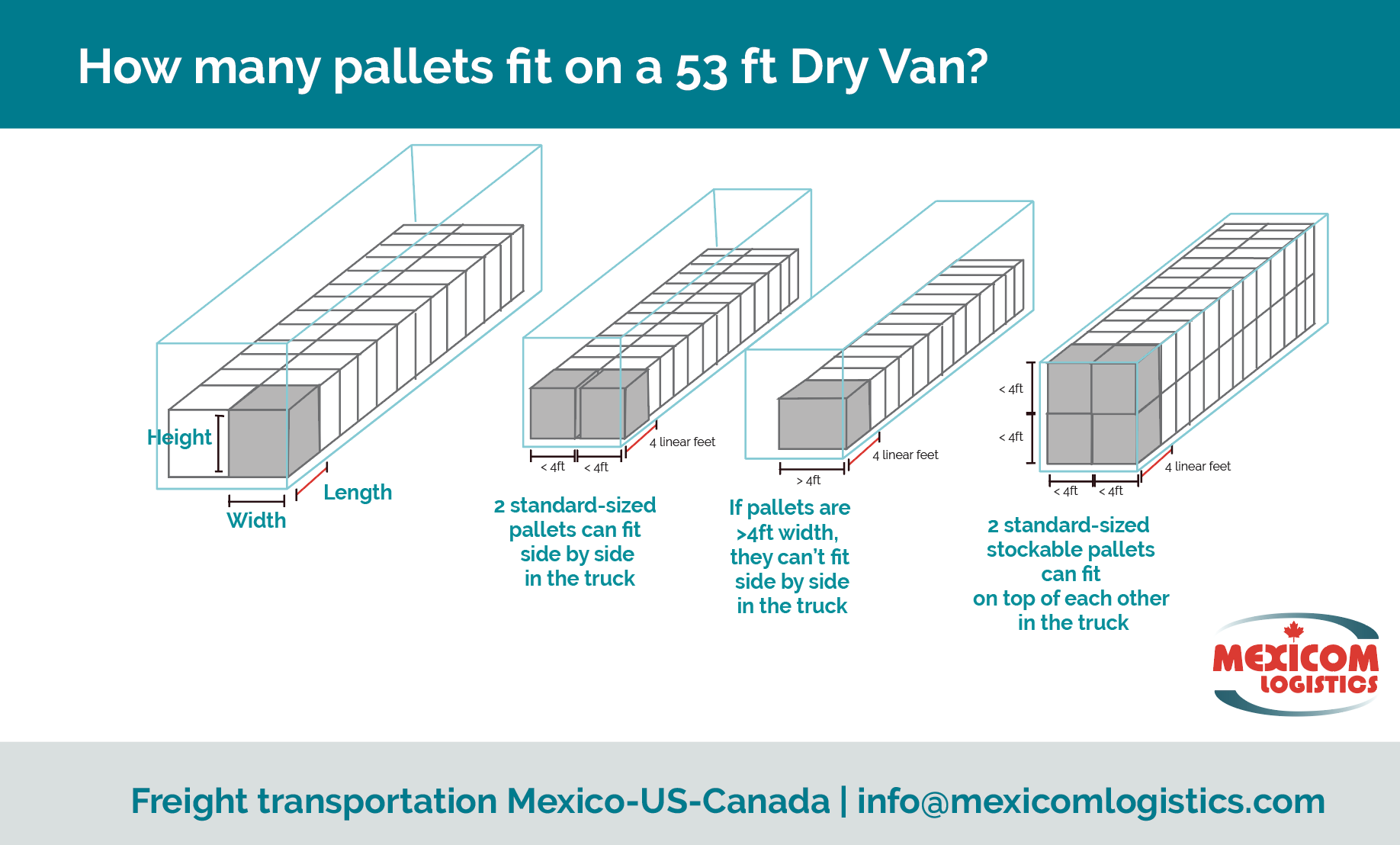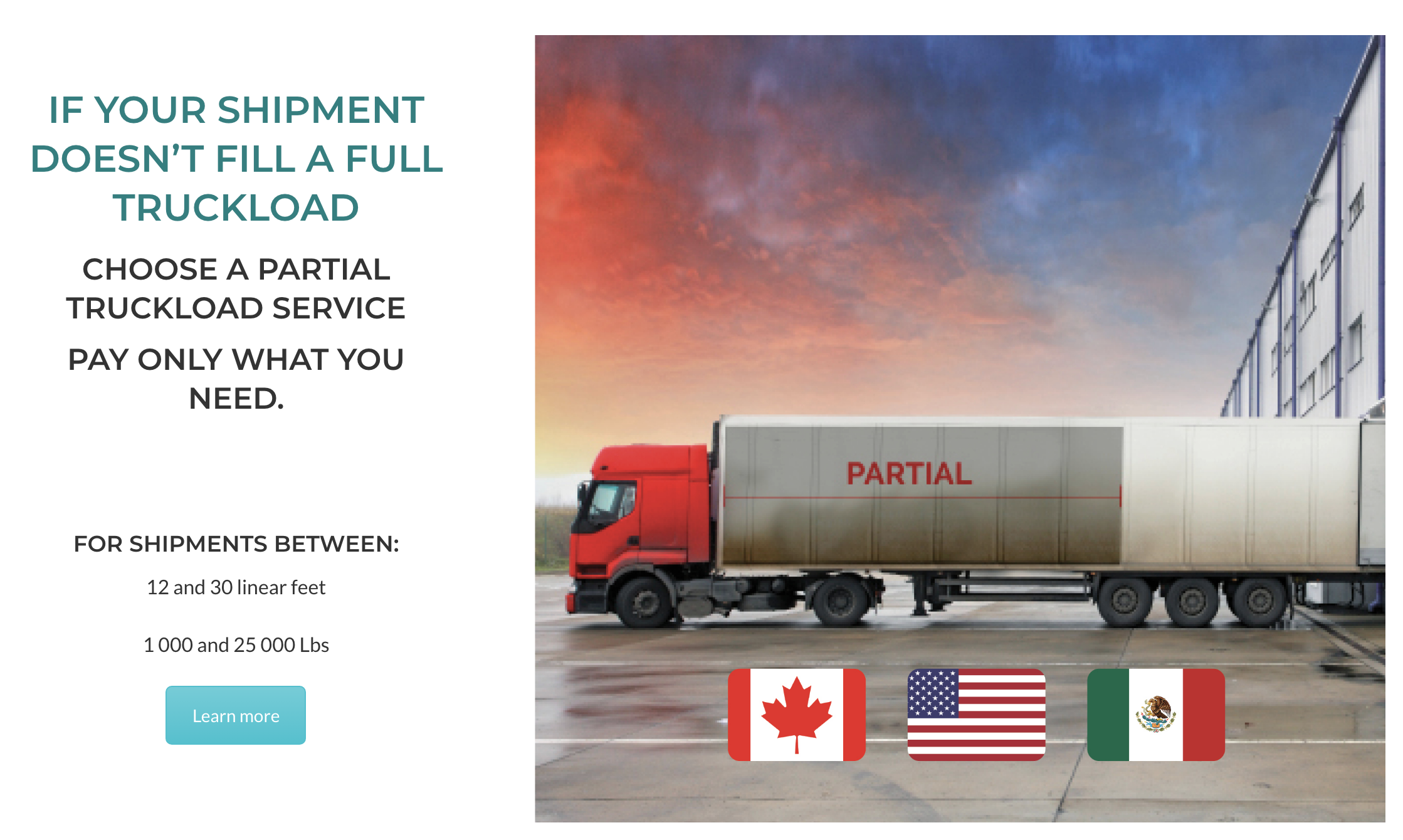How many pallets fit on a truck? How to maximize trailer space?
Many first-time shippers and even experienced ones have questions about trailer capacity to transport palletized freight. Many of our customers ask us on a daily basis how many pallets they can fit on a truck, so we decided to create this post to provide them with useful information that will help them not only to understand truck capacity, but also to know how to maximize trailer space and save money on freight shipping.
There are different trailers and pallet sizes available in the market to transport goods. In this post, we will illustrate trailer capacity based on the most common trailer and pallet sizes.
The most common trailer size in freight shipping in North America is 53ft (636 inches)
The standard pallet size is 48″ long x 40″ wide x 48″ height.
Maximizing trailer space
There are two important things to take into account when determining how many pallets can be shipped in a 53ft Dry Van:
- Are pallets stackable? If pallets are stackable and do not exceed the standard height, it is possible to fit one on top of each other to maximize trailer space.
- Are pallets standard size? Are they higher or wider? Trailers are limited by their width and height space so it is very important to know all pallet dimensions to determine how many they fit on a truck.
Both variables stackability and size are important to determine how many pallets can be transported on a truck. For instance, if pallets are stackable but are higher than 48 inches, it won’t be possible to stack them due to the trailer height limits. On the contrary, if pallets are standard size but contain delicate goods, they can not be stackable.
So, How many pallets fit on a 53 ft Dry Van?

If your pallets are standard-sized (48″ x 40″ x 48″):
A 53ft truck can fit 26 non-stackable pallets and 52 stackable, standard-size pallets.
If pallets are not standard-sized
Certainly, the number of pallets that fit on a truck depends completely on the pallet size. We will provide you with general guidelines to know how many non-standard-sized pallets you can fit in a truck.
First, check the pallet length to see how many linear feet your shipment occupies. You can read more about how to calculate linear feet in our blog post.
Guidelines to know how many non-standard-size pallets fit on a trailer
1- First, the Length: If your pallets are 4 feet lengths or less, you can fit at least 13 pallets on the truck
2- Second, the width: If your pallet is less than 4 feet width or less, then you can fit at least 26 pallets. You can fit one pallet next to the other, as long as you don’t exceed 8.5 feet or 102 inches.
3- Third, the height: If pallets are stackable and are less than 48 inches, then you can fit a total of 52 pallets in a trailer because you can stack them on top of each other.











Great info thanks
Funny, I put 30 single stack 40×48″ pallets on a 53′ everyday…
Yes if you turn every pallet sideways in the trailer when you load them, then yes you will get 30 pallets. But if you do not turn the pallets sideways you will only get 26 skids.
While the above calculations 48/40 pallets in 53’ trailer are correct however if the product stacked on pallet OVERHANGS the sides then all bets are off !,
You must measure the size of the stack pallet to get an accurate figure. Shippers will often load boxes /product that exceed the pallet size. This often leads to product damage due to forcing with no allowance for clearance.
what is the maximum height of a double stacked pallet that can fit in 53’ dry van ?
The total height I have is 109 inches however the total height of dry van is 110 inches so will it work fine